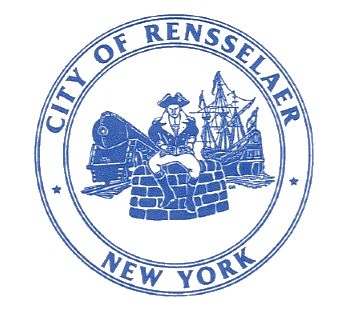What is Stormwater?
Stormwater is water from rain or melting snow that doesn't soak into the ground but runs off into the City’s sewer system, and eventually into waterways such as the Hudson River. It flows from rooftops, over paved areas and bare soil, and through sloped lawns while picking up a variety of materials on its way. The quality of runoff is affected by a variety of factors and depends on the season, local meteorology, geography and upon activities which lie in the path of the flow.
What is the Problem?
As it flows, stormwater runoff collects and transports pollutants to surface waters. Although the amount of pollutants from a single residential, commercial, industrial or construction site may seem unimportant, the combined concentrations of contaminants threaten our lakes, rivers, wetlands and other water bodies. Pollution conveyed by stormwater degrades the quality of drinking water, damages fisheries and habitat of plants and animals that depend on clean water for survival. Pollutants carried by stormwater can also affect recreational uses of water bodies by making them unsafe for wading, swimming, boating and fishing.
What is being done?
The 1987 Clean Water Act (CWA) contained provisions aimed at launching a national effort to regulate the discharges of pollutants into waterways during runoff events. The Environmental Protection Agency (EPA) published Phase I regulations in 1990 which focused on large and medium-sized municipalities and stormwater runoff from certain specified types of activities. As a result, the New York State Department of Environmental Conservation (NYSDEC), given permitting authority by the EPA, issued two general permits in 1993. The first dealt with industrial site runoff and the second with stormwater runoff from construction activities disturbing an area of five acres or more.
EPA’s Phase II stormwater regulations were promulgated in 1999, significantly expanding the scope of activities subject to permitting. The Phase II regulations identified publicly owned and/or operated separate storm sewer systems (MS4s) which were located within areas designated as urbanized as defined by the United States Census as also needing a permit. The City of Rensselaer was identified as an MS4.
Under the MS4 permit, the City of Rensselaer was required to develop a Stormwater Management Plan (SWMP) which addresses the following six Minimum Control Measures:
1. Public Education & Outreach on Stormwater Impacts 2. Public Involvement & Participation 3. Illicit Discharge Detection & Elimination 4. Construction Site Stormwater Runoff Control 5. Post-Construction Stormwater Management 6. Pollution Prevention & Good Housekeeping
As part of this SWMP, in 2007 the City adopted a Stormwater Management law (Chapter 145 of the City of Rensselaer Code) which addresses erosion and sediment control as well as illicit discharge detection and elimination.
